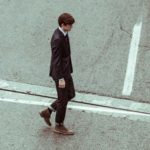 I was reflecting after the group I conduct on Wednesday evenings how doubt is such an essential part of the human condition.
I was reflecting after the group I conduct on Wednesday evenings how doubt is such an essential part of the human condition.
We can never really be sure of anything in this life, except we will die one day, however we put enormous amounts of time, money and energy into trying to convince ourselves otherwise.
When I hear someone saying “I was just absolutely sure it was the right thing to do” I find myself wondering what the doubt is that they are too scared to let themselves know about, and that they are having to defend themselves against. What makes them so anxious they have to know?
I believe the distortion of the fundamentalist religions is to polarise doubt and faith. I think of faith as allowing space for our doubts. I know I need to have faith to function in the world I live in: Faith in the technologies I participate in every day; faith in the loyalty of my friends and family; faith that I will be understood and respected. Yet I know these carry no guarantees: My hard drive crashes and I lose all my family photographs; my wife leaves me for someone else; or my neighbour drives recklessly and kills my dog as I walk him down my road.
When I am a baby, too much doubt can destroy me because it does not allow for faith to develop. Being so helpless is impossible without Winnicott’s ‘good-enough mother’ modulating and containing my experience of doubt in ways that allow me to grow faith, and to extend this faith into the world through transitional experience. Then as an adult every time I engage with culture I re-enter this transitional space in ways that allow the freedom to play with doubt and faith, and renew my relationship with the space between them.
John Bowlby’s famous drawing of the course of a toddler wandering away from its mother as she sits on a park bench, and returning to find her still there before wandering off again – tracing out the pattern of a flower – is a pattern of faith and doubt. The toddler has enough faith that mum will stay put to wander off, and doubt enough to return to check that she really has. Some of us repeat this pattern in our adult lives, forever trying to heal an injured relationship between doubt and faith.
Perhaps the doubt that cripples is the doubt that insists on the polarities of omnipotence and helplessness and denies our essential subjectivity.
Science sometimes loses track of itself in this dance of doubt and faith, allowing itself to be seduced into aspirations of certainty, as Heidegger writes in his little essay “The Age of the World View”.
As soon as I lose sight of doubt in my work with patients I find myself in trouble. Paraphrasing something Bion is reported as having once said: “in every therapy there will be two rather anxious people in the room”.